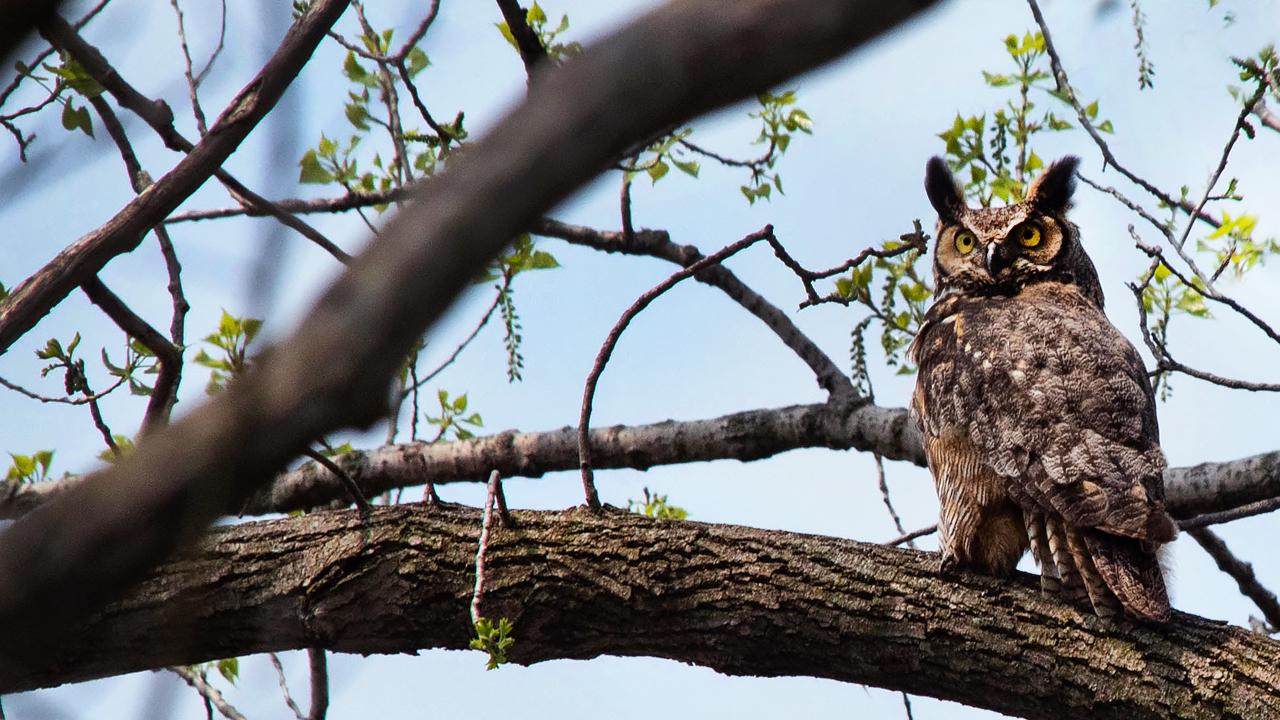

Wildlife
Garden Stories
Who-who-who’s That in the Winter Woods?
At the end of fall, it is easy for people to think that nature has shut down for the winter—this could not be farther from the truth.
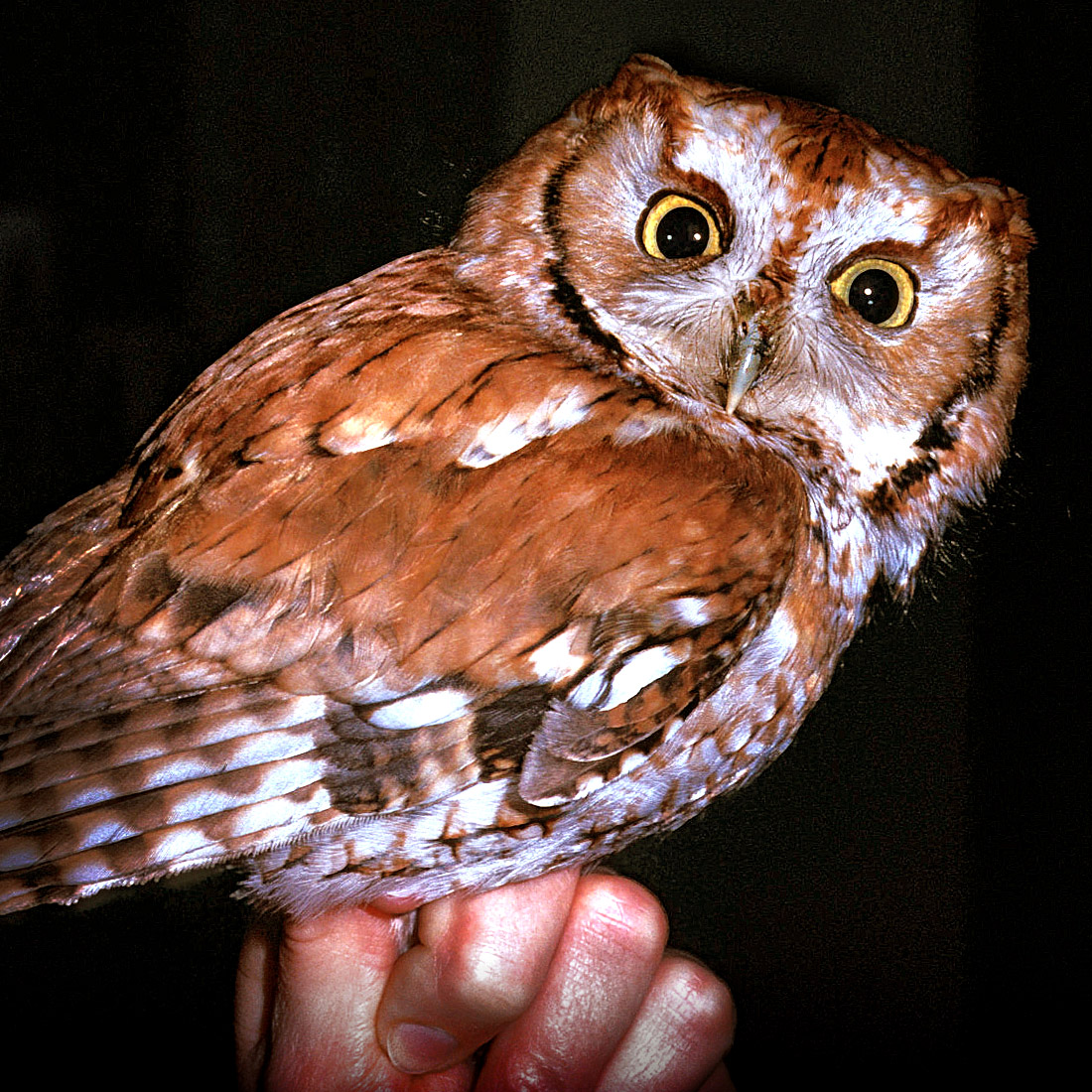
This thought is particularly true of people who have walked through the McDonald Woods at the Chicago Botanic Garden and seen the lush vegetation, hovering bees and butterflies, scurrying chipmunks, and all manner of crawly things on the woodland floor. Although most of the vegetation does go dormant for the winter, there is still a myriad of life to be found, even though it might be more inconspicuous and less flamboyant.
McDonald Woods, for instance, is home to several species of owls, some of which are year-round residents, and others that mostly show up in winter. To help with identification of owls, you might look for owls with “ear tufts”—not really ears, but feather decorations used for courtship or to help break up their outline to make them blend into the background so they’re less easily seen. Owls can also be divided into those with yellow eyes and those with dark brown eyes.
How to Spot Owls in Winter
Scope out any fairly large nests that you see. You may be lucky enough to spot what looks like a cat sitting on the nest with its ear tufts sticking up over the edge.
Pay attention to any songbirds in the woods. It is common for blue jays, chickadees, and crows to mob owls. If they spot an owl, the songbirds will begin to give rather raucous calls and become agitated near where the owl is roosting. Check the area of these raucous calls.
Search for signs of owls, such as pellets or the regurgitated remains of their prey, found beneath favorite perching locations. Also look for the imprint of wing marks and possibly a few drops of blood on the snow at the end of a line of deer mice tracks, indicating where the trail has ended for that unlucky mouse.
Great Horned Owls
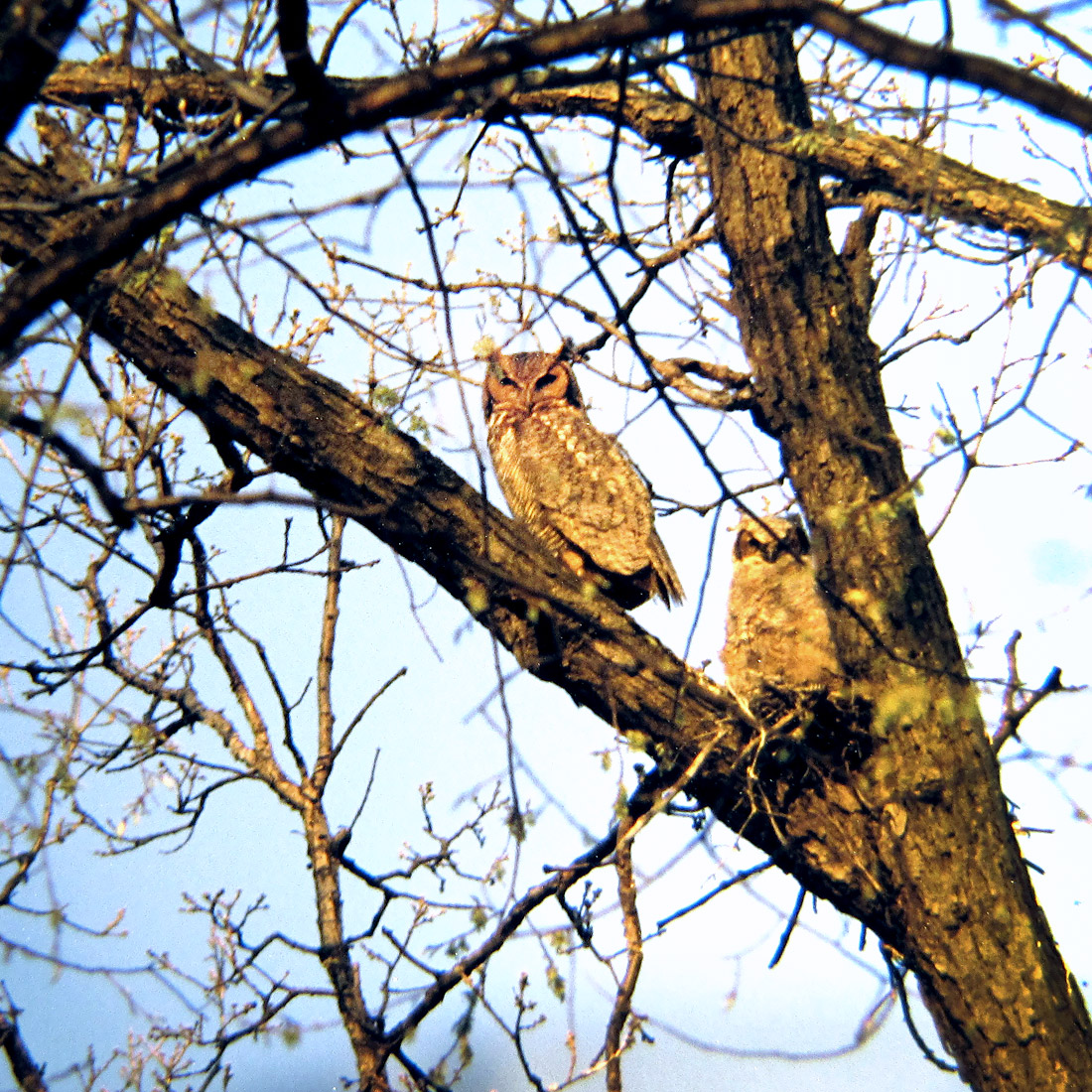
The most commonly encountered owl in the woods in our region is the great horned owl. At nearly 2 feet tall and with a wingspan of nearly 4 feet, this powerful predator is the largest of those eared owls with yellow eyes. Because of its large size and large talons, it is a generalist predator. This means that it can utilize a large variety of prey, ranging in size from small deer mice and warblers to animals as large as rabbits, skunks, and ducks. Being a generalist, the great horned owl is well suited to urban areas where its preferred habitat, scattered open woodland, and abundant prey associated with urban development, helps to make them adaptable. Another adaptation is that the great horned owl does not build a nest. Instead, it occupies old nests of other species, like hawks or crows, or sometimes even old squirrel nests.
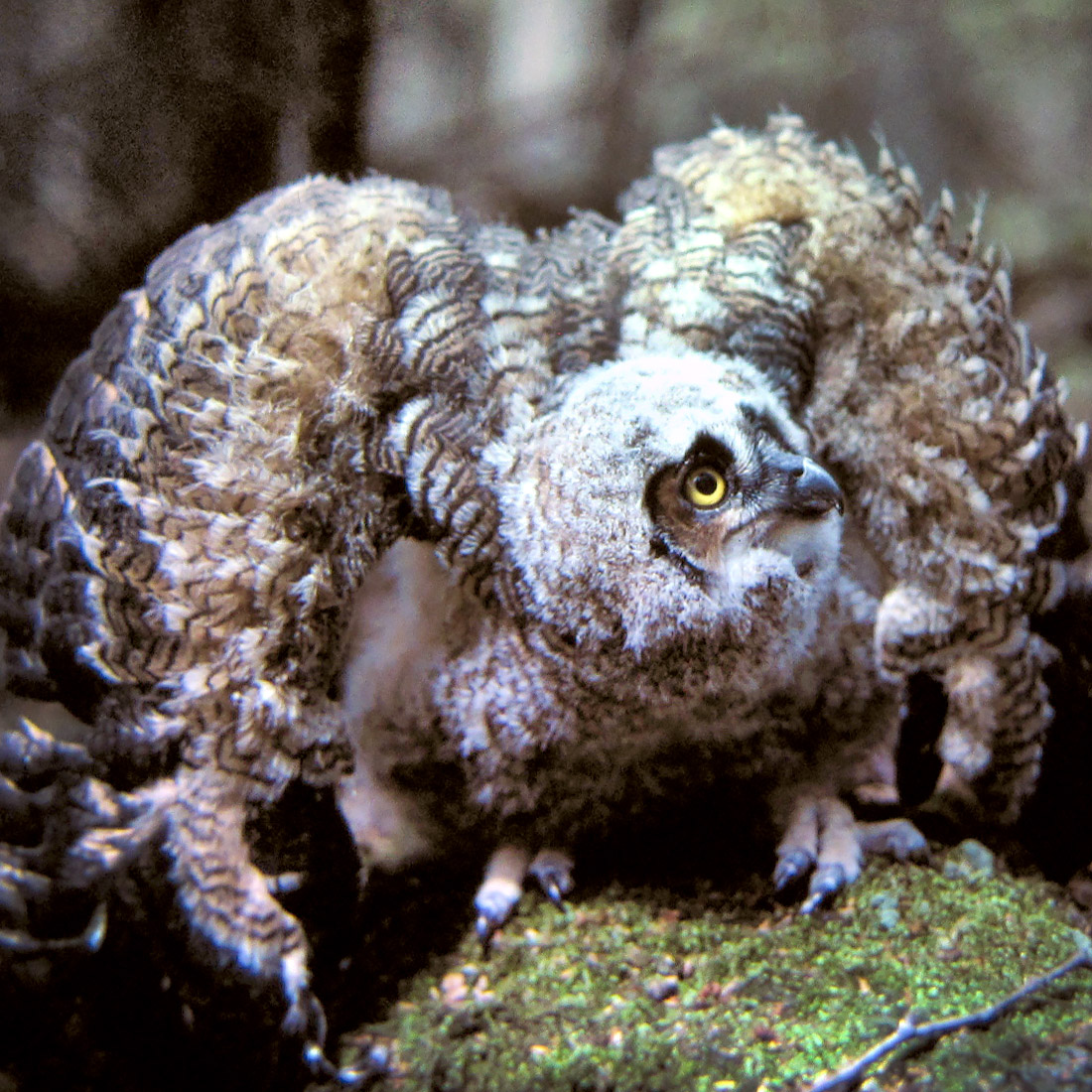
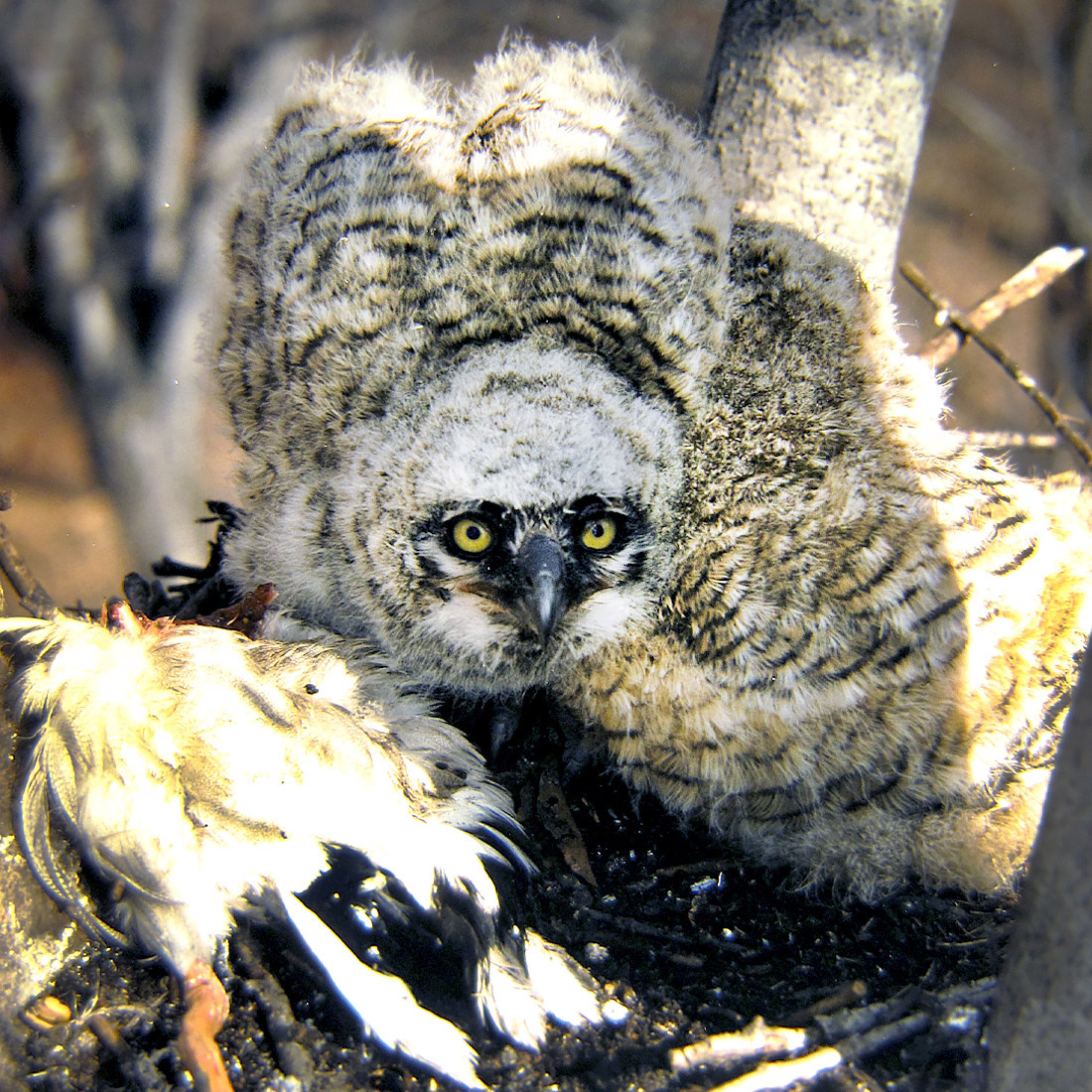
Winter is an active time for great horned owls, who you might hear in the woods. They are defending their territory from other owls, beginning their noisy courtship displays, and searching out potential nests. This is the time of year that their vocalizations are most noticed. Their usually five-syllable hoots are the classic owl call, the male being lower and the female higher pitched.
The great horned owl is the earliest nesting bird in the region. It is not uncommon to find a female sitting on a nest in February with snow piled on her back. The two to three eggs hatch in late February to early March, and the young leave the nest in late March or April. Because young owls take such a long time to reach independence, the adults often need to push them out of the territory in fall to get ready to start the next nesting season.
Screech Owls
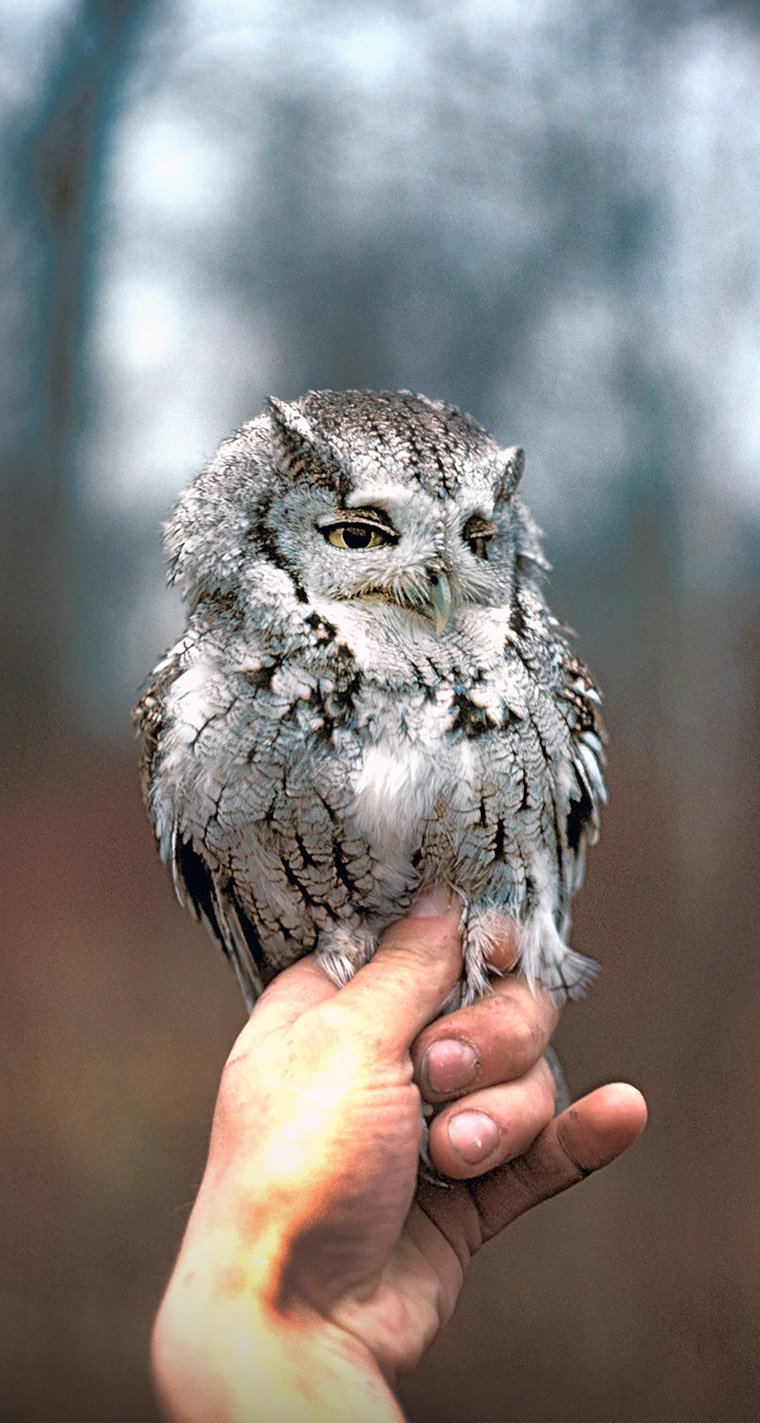
Another owl in the eared group is the screech owl. A little more than 8 inches tall with a wingspan of less than 2 feet, this miniature version of the horned owl is perhaps the second most encountered owl in the woodland. This owl is unique in that it comes in two color forms. The species can either be a pale gray or a rusty red color. Both color forms can often be found in the same nest, and although it also does not build its own nest, it is a cavity nester. It will commandeer old woodpecker cavities, hollowed out branch scars, or even birdhouses, if the entrance is large enough.
Research has suggested that the color forms are related to heat or cold tolerance. The gray form is much more tolerant of cold temperatures, while the red form does better with more mild weather. For this reason, if we have a severe winter, there may be increased mortality in the red birds. People are most aware of their presence due to their calls. Instead of typical owl hoots, the screech owl has a call that sounds like a horse whinny.
Although the screech owl feeds heavily on small mammals, it is rather good at capturing songbirds. Starlings and English sparrows are often on their menu, but any songbirds that are active late in the day or are exposed at night may fall prey to this species. Because of their familiarity with cavities, screech owls can often be found in barns, sheds, or other places where starlings and house sparrows may also go to roost.
Long-Eared Owls and Saw-Whet Owls
Two other much less-commonly seen owls in the McDonald Woods are the long-eared owl and the saw-whet owl. The long-eared, as the name suggests, is also an owl with ear tufts. It is midway in size between a screech owl and a horned owl. The long-eared owl is somewhat of a nomad in that its populations move around, depending on prey abundance. Unlike the horned owl, which can easily switch between different sizes of prey, the long-eared owl is a more specialized predator and restricted to small prey like mice and voles. In winter, they’re often found in winter roosts with other owls.
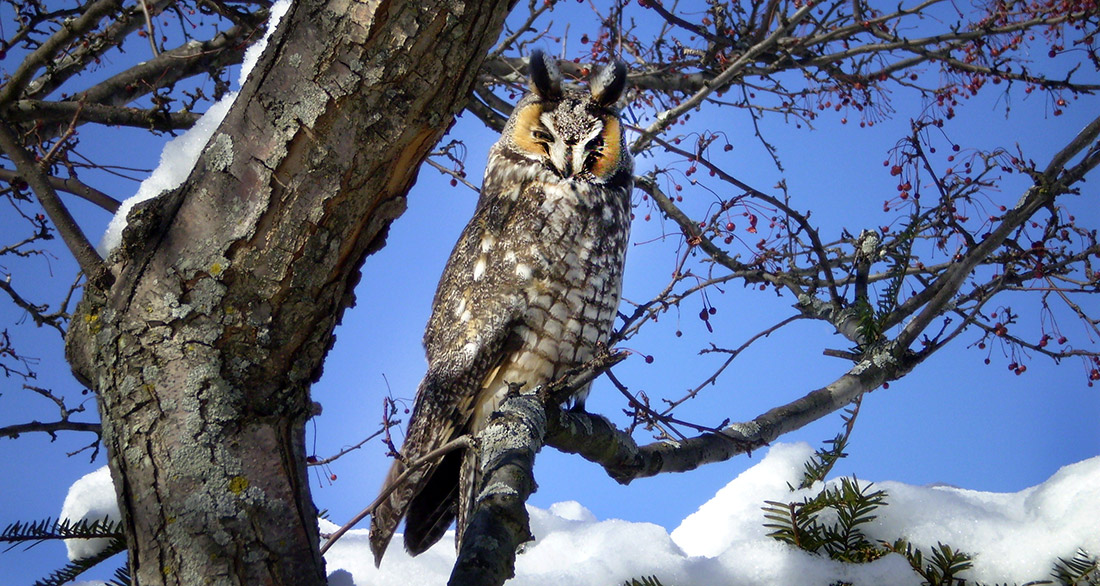
Drop by the McDonald Woods on a self-guided winter in the woods walk—warm up by the fire—to look for owls and other signs of life.
Our smallest species of owl in the region is the saw-whet owl. It is one of the species found in the “earless” group. At 8 inches tall and a wingspan of less than 20 inches, it is slightly smaller than the screech owl. This species is generally only found in the McDonald Woods in winter, after migrating south from more northerly nesting areas. Like the screech owl, it is another cavity nester, but since the saw-whet owl is usually only seen in winter, it is most likely trying to be invisible in a dense stand of shrubs, patches of dead leaves on vines and branches, or concealed by some other dormant vegetation. Because saw-whet owls are not breeding at this time of year, they are generally silent.
This blog was written by the Garden’s long-time senior ecologist Jim Steffen, who retired in 2021. The Garden is grateful for the legacy he leaves us with in his stewardship of the McDonald Woods. All photos courtesy of James F. Steffen

